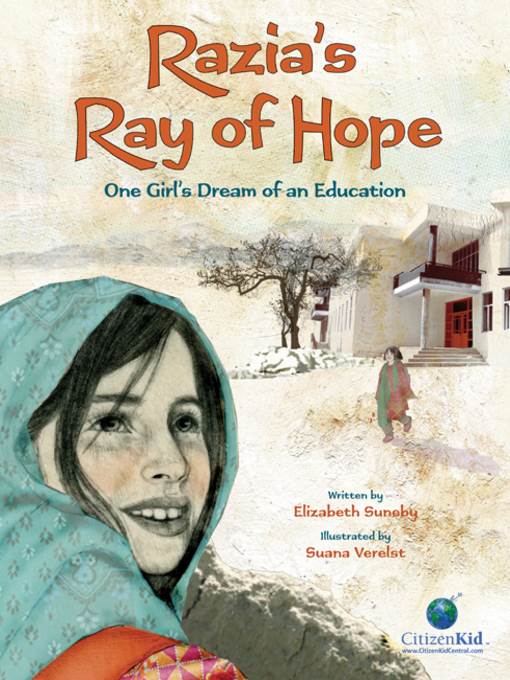
Razia's Ray of Hope
One Girl's Dream of an Education
فرمت کتاب
ebook
تاریخ انتشار
2013
Lexile Score
680
Reading Level
2-3
ATOS
4.1
Interest Level
4-8(MG)
نویسنده
Suana Verelstناشر
Kids Can Press Ltd.شابک
9781771381567
کتاب های مرتبط
- اطلاعات
- نقد و بررسی
- دیدگاه کاربران
نقد و بررسی

August 1, 2013
The United States is still involved in Afghanistan, and interest in girls' education in that war-torn country is a strong topic of concern. Young Razia wants to attend the new girls' school that is being built in her village, but her grandfather is her only ally. Her older brothers, uneducated themselves, don't want her to attend. Little do they know that she has already taught herself to read and that she is independent enough to ask the head of the school to convince her family. It is difficult to understand why Aziz, her eldest brother, wields such power in the family, but teacher Razia Jan, modeled after a real Afghani-American who has returned to her country to spread the hope of education, knows she has to persuade him. (Confusingly, the teacher shares the protagonist's name.) However, it is young Razia herself who proves to Aziz that education can be useful when she uses her secret literacy to give him the correct dose of medicine when he falls ill. Using collage techniques that employ photography, traditional fabrics and realistic pencil sketches, Verelst creates a striking complement to this realistic story of contemporary life. The explanatory material at the end and the classroom activities are useful for educational settings. Purposeful in a positive way, this imaginatively illustrated book should open readers' eyes to issues facing children who live in very different circumstances. (Picture book. 8-11)
COPYRIGHT(2013) Kirkus Reviews, ALL RIGHTS RESERVED.

September 1, 2013
Gr 3-5-This story was inspired by Razia Jan, an Afghani woman who lived in the U.S. but returned to Kabul to build the first girls' school there. A fictional youngster named Razia longs to go to the newly opened school for girls but must have permission from her father and oldest brother. Both the prose and the plot are predictable-her relatives refuse: "Next you'll want Razia to go into town to shop by herself," says her father to the child's supportive grandfather. "Or for women to shed their burqas in public," her brother adds. In the end, the real Razia Jan appears to convince the men, and the child is permitted to go to school. In contrast, there is nothing ordinary about the mixed-media illustrations. Each spread is a combination of muted colors, block-print designs, and evocative collage portraits of elders, active children, and the blue backs of burqa-clad women, interspersed with photographs of everyday objects: a teapot, a wool blanket, colored pencils in the school. Back matter includes a glossary of Dari words, and suggested classroom activities and discussion. Also included is a short biography of Razia Jan and a photo of her with three grinning schoolgirls. The photo brings the fictional story to life, illuminating that part of the world in which girls beg to go to school, then bring their workbooks home to teach their mothers.-Toby Rajput, National Louis University, Skokie, IL
Copyright 2013 School Library Journal, LLC Used with permission.

September 15, 2013
Grades 3-5 Inspired by the true story of Razia Jan, an Afghani American woman who has devoted her life to advancing the education of Afghani girls, this follows a fictionalized Razia as she begs the men in her family to be allowed to attend the new school for girls being built in her village. Even a supportive grandfather cannot sway the steadfast refusal of the patriarchy, so it is only by chance that her dream comes true. Razia's yearning for school is described in rich, context-specific language: They painted the door red, as bright as the flames of the tandoor. Verelst's mixed-media illustrations feel fresh and modern while remaining true to the rural environment, combining crisp, detailed pencil renderings with digital reproductions of traditional Afghani fabrics and photographs, situating Razia's story firmly in the sun-bleached, rocky terrain of rural Afghanistan. The back matter includes a list of classroom-friendly activities that should help teachers encourage readers to appreciate the literary, artistic, and historical elements of this book.(Reprinted with permission of Booklist, copyright 2013, American Library Association.)

























دیدگاه کاربران